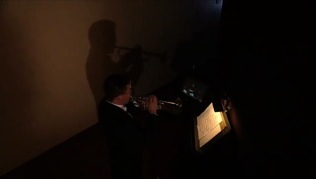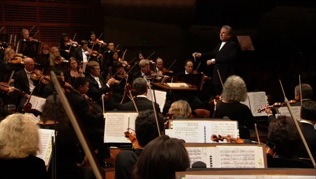It isn't just individual colors that make Mahler's soundscapes, but the way he combines them into new dramatic possibilities by anticipating the techniques of great filmmakers.
 Play
Play
While offstage effects had commonly been used in opera and theatre to enlarge the depth of the action, symphonies before Mahler’s were usually composed on one sonic plane. To give depth to his world from the very beginning, Mahler asks that the trumpets be placed offstage, in the far distance.
 Play
Play
In the Scherzo of the Third Symphony, Mahler uses the arresting sound of the postman's signal to transform our sense of time and space. Everything goes still, and as if in a daydream, we hear a gentle posthorn signal played from offstage. The high notes evoke the piercing cry of a yodeller in the mountains.
 Play
Play
Late in the Scherzo of the Third Symphony, Mahler stretches the scale of his music in ways that anticipate cinematic effects of decades later. In a few seconds, for example, Mahler creates a musical scene change, transforming a rustic call of a clarinet in a peasant band to a cosmic call in the horns. Suddenly, it’s as if we’re looking down on a scene from miles above.